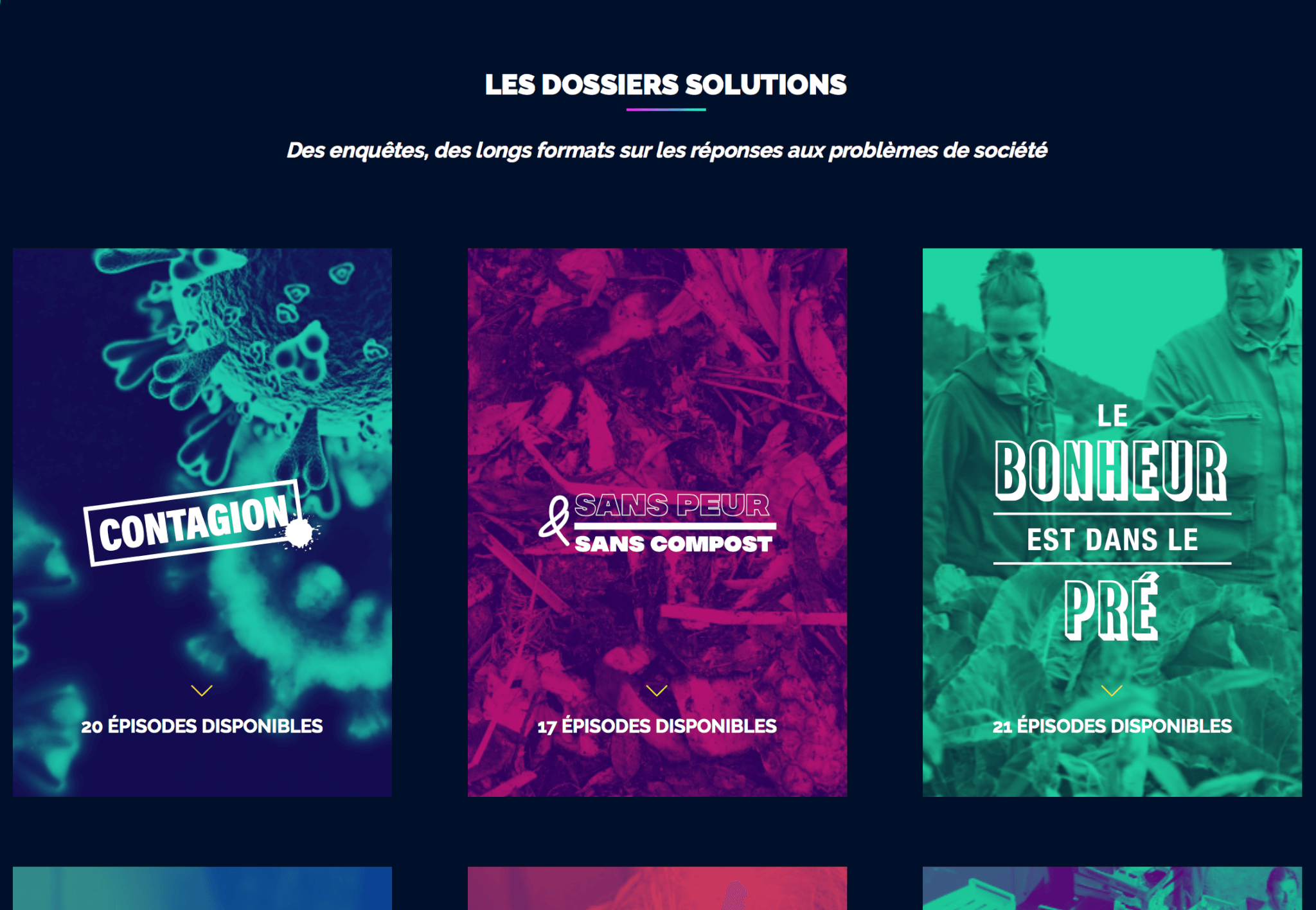How To Offer Local Solutions in a Regional Newspaper
“Readers turned away from overabundant, anxiety-provoking news streams. As a journalist, too, you are left wanting more when you have been covering the same problems for ten years.”
Sophie Casals, journalist at Nice Matin
Nice Matin was on the verge of bankruptcy before they decided to revamp their digital offer and implement constructive journalism at its core.
How They Did It
In November 2014, Nice Matin faced insolvency as a result of the decline in single-copy sales and advertising revenue. To save their newspaper, employees each gave a month’s salary to buy their company and started redefining their strategy, which called for an update.
Nice Matin’s digital manager, Damien Allemand, invited all interested journalists to take part in roundtable meetings. “There were several alarming observations, common to the news industry as a whole, notes Casals: readers turned away from overabundant, anxiety-provoking news streams. As a journalist, too, you are left wanting more when you have been covering the same problems for ten years.”
To reconcile readers with news, Nice Matin decided to turn to solutions journalism. “It existed in the U.S. and Libération had made a special solutions issue which was well-received by the public. We thought: why not turn it into a systematic offer? Give our subscribers access to long format solutions journalism? It also echoed our company’s recent buy-back story,” explained Sophie Casals, who has worked as a journalist at Nice Matin for over 20 years.
“We thought: why not turn it into a systematic offer? Give our subscribers access to long format solutions journalism?”
Sophie Casals, journalist at Nice Matin
A series of practical steps
The team tackles the monthly investigation in several phases through a series of articles.
- First they take stock of the situation, or the problem
- Then introduce existing responses
- Finally look into the limitations and perspectives of these solutions.
Beyond the typical 5W, the journalists ask questions like ‘Now what? Who does what? And how?’”

Building trust with subscribers
Subscribers have exclusive access to events, organised at the end or halfway through the month, where they get to meet experts and other interviewees. “These panel-discussions are a way to take the dialogue further, and elsewhere.” They also allow journalists to build a relationship of trust with their readers, by associating them to the process and by being as transparent as possible about the inner workings of the paper.
“We involve them (readers) from the beginning. We define three newsworthy and relevant themes, prepare them and pitch them to our readers through our newsletter and Facebook group. They then have a week to vote for the story they would like us to pursue throughout the following month.”
Sophie Casals, journalist at Nice Matin
The winning topic is not always the one the team had expected, which only reinforces their determination to better know their audience.
With 400 to 500 voters each month, Nice Matin can count on steady reader involvement. “But people often feel like they aren’t legitimate enough to decide what we should cover. That is something we want to improve.” To further stimulate interaction, the team is working on a source database which subscribers with a certain field expertise are invited to join. “They will come to our office to hear how we operate and be associated to our groundwork, like helping us keep track of current issues or tipping us on existing solutions. Having this expert database is recognizing that our job isn’t to know everything, but to ensure the mediation between those who know and the public.”
The return on investment
Betting on constructive journalism contributed to the newspaper getting back on its feet, with solutions articles outperforming other content on many parameters. Sophie Casals gives the example of an 8-min-read article about an association buying up land for farmers to settle. “It had 25,000 views, among which 9,000 unlocked the content by watching a short video ad, 19 bought the article, and 10 bought subscriptions. Yet this was far from a click-bait story!”
Better yet, it helps retain readers. Both because they spend more time reading (which confirms that long form has its place in the digital world), and because some decide to subscribe. “Online solutions articles generate most subscriptions with a conversion rate of 10%, compared to 1% for other articles.”
“Online solutions articles generate most subscriptions with a conversion rate of 10%, compared to 1% for other articles.”
Sophie Casals, journalist at Nice Matin
Solutions journalism also lends itself to sharing. Sophie explains that “People can relate and will easily comment to mention a solution they have heard of. The social and environmental issues we cover speak to everyone, but our solutions and the people we meet are locally rooted.”
While investigating the question of mobility in the region, Nice Matin’s journalists received 1,500 responses to surveys on cycling habits. Not only did it provide a good base for sharing the articles later on, it also resulted in local authorities requesting the data to see where they could improve the cyclists’ experience.
Key Takeaways
1. Financial benefits. Solutions-focused journalism can be built into the business model for a digital newspaper.
2. Subscriber engagement. Involve readers in the story selection process.
3. Negative news. Both readers and journalists tire of the same local negative issues on the news agenda.

